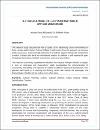The Role of Public Art and Culture in New Urban Environments: The Case of ‘Katara Cultural Village
| Author | Al Suwaidi, Maryam |
| Author | Furlan, Raffaello |
| Available date | 2018-02-06T09:58:50Z |
| Publication Date | 2017 |
| Publication Name | Architecture Research |
| Identifier | http://dx.doi.org/10.5923/j.arch.20170704.01 |
| Citation | Maryam Al Suwaidi, Raffaello Furlan, The Role of Public Art and Culture in New Urban Environments: The Case of Katara Cultural Village in Qatar, Architecture Research, Vol. 7 No. 4, 2017, pp. 109-122. doi: 10.5923/j.arch.20170704.01. |
| ISSN | 2168-507X |
| Abstract | In recent years, public art has been featured as a trend in urban environments in GCC. During its period of development, the State of Qatar worked on large megaprojects designed to attract global investments and tourists. Also, the current process of globalization has greatly contributed to increasing competition between cities and promoting the development of public art within new urban developments. This research study discusses the role of public art in influencing urban environments in Qatar, namely within Katara Cultural Village. The study explores the extent to which such an approach can raise local communities’ environmental awareness as an indirect input to the process of upgrading the desires of those living in these areas and of international tourists. In addition, it reviews the experiences of different types of catalysts for regeneration, such as art and culture, that can enhance the built environment’s recognition, value, and economic growth. A qualitative evaluation is employed for this research study, which leverages subjective methods such as interviews and observations to collect substantive and relevant data while examining the interaction of connectivity, attraction, and development as they relate to economics and other multifaceted aspects of development. The findings reveal the main advantages and disadvantages of introducing public art to an urban space, namely in regard to acceptance, culture, and social behavior. In addition, the study helps identify new ways to use public art to enhance public interactions and participation in new urban environments. |
| Language | en |
| Publisher | Scientific & Academic Publishing |
| Subject | Cultural Planning Culture Cultural Districts Katara Cultural Village Gentrification Tourism |
| Type | Article |
| Pagination | 109-122 |
| Issue Number | 4 |
| Volume Number | 7 |
| ESSN | 2168-5088 |
Files in this item
This item appears in the following Collection(s)
-
Architecture & Urban Planning [305 items ]



